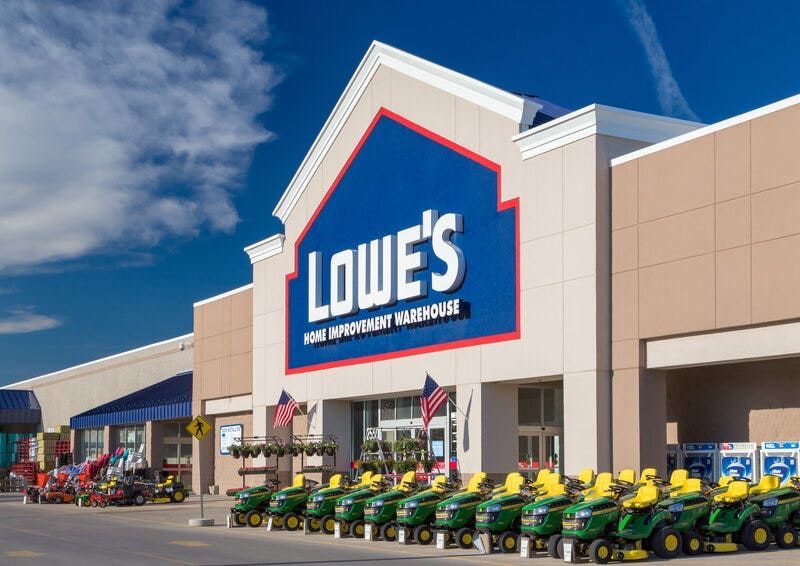Lowe’s tops its earning by doing better than what Wall Street’s revenue and earnings expected in its fiscal third quarter. The big home improvement store earned $20.17 billion in revenue. This amount is higher than the $19.93 billion that experts had predicted. The company’s profit per share was $2.89, which also beats the forecast of $2.82. However, while Lowe’s performed well, it expects sales for the year to go down compared to last year.

Lowe’s CEO, Marvin Ellison, said the company’s results were “better than expected.” He said the fiscal third-quarter performance was good even without the extra sales that were caused by hurricane-related demand, where people were fixing their homes after Hurricanes Helene and Milton.
The CEO of the home improvement store explained that the good results came from strong online sales. He also attributed the positive results to professional contractors who were spending more, and also to small outdoor do-it-yourself (DIY) projects.
ALSO READ: Lowe’s and Home Depot Face Challenges Due to the Slumping Housing Market
However, the same-store sales, which were open for at least a year, were down by 1.1%. Even though it dropped, it is still better than the 2.7% drop that experts had predicted. Lowe’s DIY shoppers, who make up 75% of its business, did not spend as much as before. However, hurricane recovery efforts and strong sales from professional contractors helped to balance everything out.
Lowe’s CEO said more on why sales dropped. He attributed it to the shift in consumer spending behavior. Ellison said that many customers are struggling financially because of inflation and high interest rates.
Recently, mortgage rates went as high as 6.61%, one of the highest levels in years. This increased rate makes it harder for people to buy homes or spend on big home improvement projects. Home sales are also at their lowest point in 30 years. This situation hurts Lowe’s business because not so many new homeowners are making renovations.
Some analysts believe Lowe’s is in a good position for future growth when the economy improves. For example, when the Federal Reserve cuts interest rates, people start spending more money after about six to nine months. This could increase demand for home improvement projects. Other factors that could help Lowe’s include more hurricane recovery projects and the economy returning to normal.
ALSO READ: Home Depot Anticipates Decline in Sales as Consumer Caution Grows
Lowe’s has been focusing on its professional customers, known as “Pros.” They have been doing this by investing in programs and services that will make shopping easier for them. In the third quarter, sales to these Pro customers grew by high single digits, which is around 8–9%. This is good news, even though sales to DIY shoppers will remain lower.
Lowe’s stock dropped by 3% in early trading after the report. However, the company slightly raised its full-year revenue forecast. It now expects to make between $83 billion and $83.5 billion by the end of the year. This number increased from an earlier prediction of $82.7 billion to $83.2 billion. Sales for the year are still expected to decline by 3% to 3.5%, but this is better than the previous estimate of a 3.5% to 4% drop.
In December, Lowe’s plans to hold a meeting with investors and analysts to share its future plans. The company says it will discuss new ways to grow and improve productivity. It also says it is preparing for a recovery in the home improvement market. One analyst pointed out that Lowe’s has been dealing with tough comparisons for the past four years, which were boosted by higher market values and people spending more on their homes during the pandemic.
Last week, Lowe’s main competitor, Home Depot, also shared its financial results. Home Depot made $40.22 billion in revenue. It beat the predictions of $39.29 billion. It also had stronger profits than expected. Like Lowe’s, Home Depot’s sales at stores that had been open for a year dropped. However, its decline of 1.3% was better than the predicted 3.01%. Both companies are facing similar challenges as they adjust to changes in how people spend their money after the pandemic.

